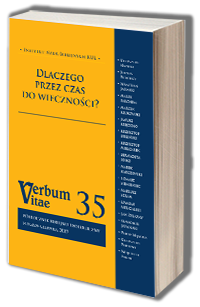Tradycja roku 364-dniowego w judaizmie okresu Drugiej Świątyni
The Tradition of the 364-Day Year in Second Temple Period Judaism
Author(s): Michał KlukowskiSubject(s): Theology and Religion
Published by: Katolicki Uniwersytet Lubelski Jana Pawła II - Wydział Teologii
Keywords: 364-day year; schematic year; solar calendar; Qumran
Summary/Abstract: This article presents a 364-day year as a schematic year, being an innovation within Second Temple Judaism which emerged from Neo–Babylonian astrology in the Hellenistic period. The very first appearance of the year is found in the Enochic Astronomical Book (1 Enoch 72–82), after which it was set in the context of the covenant by an author of the Book of Jubilees. Scholars suggest that the year was transformed from a Babylonian ideal year (i.e. 360-day year) into the 364-day year by means of four phenomenal days added singly at the end of each quarter, so as to adjust the year to a sabbatical temporal system. In the Qumran scrolls, the 364-day year is a common denominator for all calendrical texts.
Journal: Verbum Vitae
- Issue Year: 2019
- Issue No: 35
- Page Range: 145-164
- Page Count: 20
- Language: Polish

